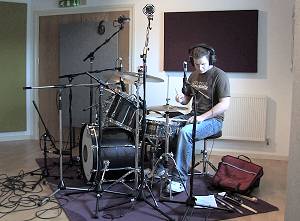
|
The world of non-commercial film and A-V |
Events Diary | Search | ||
| The Film and Video Institute | | ||||
Anatomy of a Song - editing
The story of ... the film of ... the song of ... the book ...by
Philip Bridge |
Editing General |
|
Trying to assemble the material into a meaningful whole was simultaneously most enjoyable and extremely frustrating. I was using Edius 4.5 to edit, starting from HDV. I upgraded to Edius 5 before finishing the project but not before ascertaining that it would be safe so to do! I say starting from HDV because I use the converted form, Canopus HQ, to edit. As so much of what I do is trial and error and Edius is so quick with HQ, it suits me and I cannot see any difference between a straight copy of HDV and an HDV-to-HQ-to-HDV. What I like about Edius is the ease of working within sequences and incorporating sequences within other sequences. This means that if I am struggling with one sequence I can work on an easier problem in a different sequence, and return to the difficult one, refreshed, on another day. There were two distinct challenges in the process. The first part of the film required a series of visual images to break up the talking head and audio rambling. The images needed to be interesting but not so captivating as to detract from the main source of information which was the voice-over. The second part would be a straightforward edit of shots of a piece of music being played wouldn't it? |
|
Editing The First Part |
|
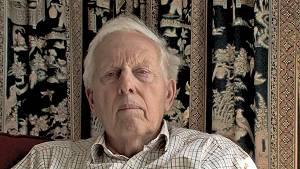 |
For the first part getting the audio down to a sensible length was straightforward enough, but early on I realised I would have to eliminate all the quotes from Norman's book. Shame about the shooting time and all the retakes to get it just right (!) but it really added nothing new to the whole, merely confirming what we already knew. OUT! I had the metronome and a single piece of A4 with the manuscript printed from CUBASE both of which I could shoot, in close-up, from any angle I chose and in my own time. I suggested to Sue that a handwritten version with a few scribbles and comments would be a useful addition and that duly arrived in the post; a mark 1 version with a mark 2 version on the other side. No expense spared! I chipped away and got it somewhere near presentable but just a bit boring visually. "Those notes need animating!" I thought as I watched it for the umpteenth time. The more I thought of it the more it seemed appropriate. I'm talking here of the handwritten bits. As I mentioned earlier I had become proficient in Photoshop Elements ... particularly with the clone tool. For those unfamiliar with the software, this allows pixels from one part of an image to be transferred to another part. Ideal for removing scratches etc. I used it to remove hand drawn music while leaving the printed lines intact! I had worked out the timing: four frames per blob, four frames per vertical line, two frames per horizontal line. It was fairly simple to work out reverse "writing". I had created a still(.bmp) from the timeline and I worked carefully on that, within Photoshop Elements, saving each "previous" frame as I went along. Each frame was carefully named so that sorting would be simple. |
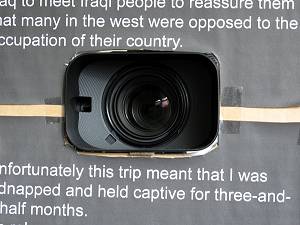 |
|
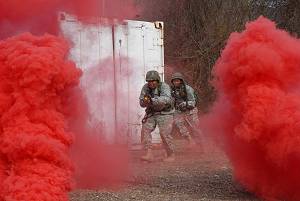 |
On the timeline I had already cut the original stills to the length they would be after animating. Somewhere along the way I realised that it would be sensible to have "mark 1" as stills and "mark 2" animated. I imported the first set of animated stills into a project bin, sorted them into reverse order with one click of a mouse button and added them to the timeline on a track directly above their "mother" image. It worked! I did the other shots. Two long days solid work for a few seconds of screen time. I know, film animators, this is nothing but to me it was like eternity. Respect! I can't remember whether it was before or after the animation that I decided to sprinkle some words around the screen. The long slow zoom had come to an end but the talking was still going on. The metronome was in large close-up screen left and Sue was tinkling away, out of focus, in the background. Once I chose a few phrases from the words of the song I realised I could have some fun with their arrangement on the screen. Nothing profound, just a bit of fun, which says "variety" to the casual observer and hopefully mildly tickles the chuckle muscles of those concentrating a bit harder. |
 |
 |
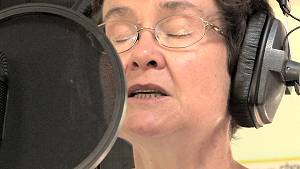 |
|
 |
 |
|
I noticed that the metronome looked a bit like a coffin and when I found a phrase incorporating the word "death" ... ; there is a phrase including the word "deep" which appears low down on the screen and in a darker shade of blue than the other phrases; ... "desperately seeking" .. well work it out for yourself! As I said, just a bit of fun for me. |
||
|
Anatomy of a Song ... 1 - beginnings | 2 - making plans | 3 - diversions | 4 - more diversions | 6 - editing again |
Share your passions.

Share your stories.
